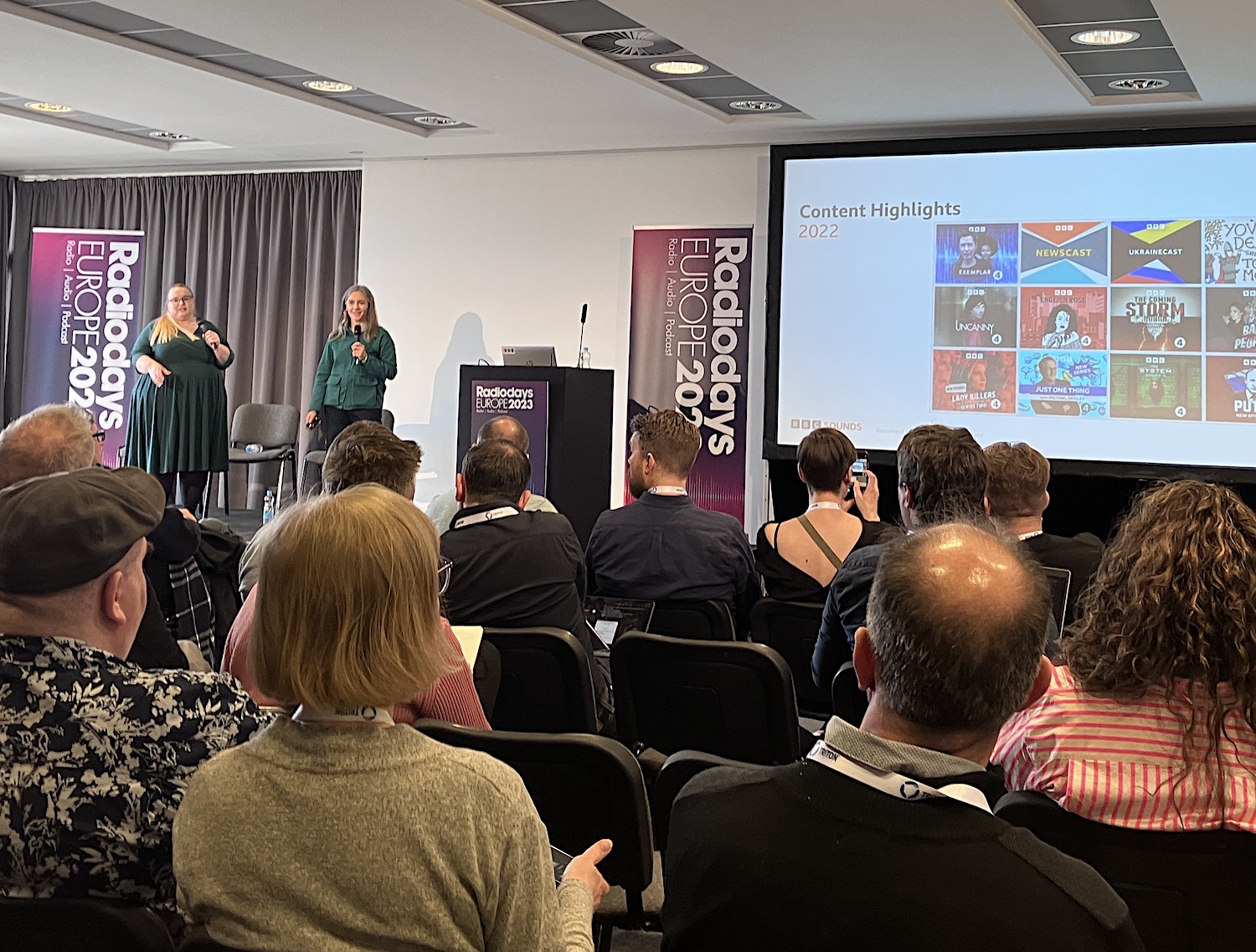The BBC Sounds app had 1.48 billion plays of its radio, music and podcast offerings last year, according to the BBC’s Emma Conneely, at RadioDays Europe.
The British national broadcaster’s audio app delivered 585 million plays of podcast and on demand radio replays in 2022.
Listening to live linear radio was the most used function in the app, with 64% of listening hours being to live radio. On demand audio also grew, with podcast listening increasing by 27% last year.
Conneely and her colleague Nicky Birch told conference delegates about some things that are working well for the flagship audio app:
- Second and future seasons of existing podcast series is very successful. “When launching a short series under an existing brand, the original series also gets an uptick” as people go back to the original first episodes to listen again or catch up on the first series they may have missed. The subsequent seasons don’t need to be exactly the same content, they can be “thematically similar,” according to Birch.
- Talent hosted music mix shows also work well.
- Live listening to big events is successful. “Spin off podcasts from those events also work well, for example Eurovision.”
- On the app – single item promos for big events or stories.
- Study support for the GCSE, such as subject revision podcasts, was also successful. The most successful topics were Biology and English. “It helped bring young audiences into BBC Sounds.”
This year, BBC Sounds will seek to build on its success by commissioning more big podcasts, by continuing a culture of experimentation and focus on audience growth.
Delivery of BBC Sounds audio on smart speakers is also a priority for 2023, with improved voice commands and a 5 minute rewind function for live radio. They will also try to simplify the commands that can be given to the feed on smart speakers to make them more like natural conversation, but “it is difficult because we have to tell people [how to say] those commands.” For example, rather than asking Alexa to simply ‘rewind’ the correct voice command is ‘Alexa, Ask BBC Sounds to rewind by 5 mins.’ The pair hope to streamline such commands eventually, but it is a matter for the smart speaker companies and not directly in control of the BBC Sounds technical architecture.

In another RadioDays session, the EBU’s Grace Zakka focused on the image of public service media in the new digital audio platforms. “We want people to know they are consuming public service media, we have to make sure our brand is prominent on whatever platform, our own or third party platforms.”
Zakka also said public service broadcasters are changing their strategy to get audiences primarily to their own platforms, “but it works best if your content and platform are strong enough… you need scale,” she said.
The Head of Content Strategy at BBC Sounds, Jonny Kanagasooriam described BBC Sounds as the BBC’s “owned and operated shopfront for all the BBC’s audio products.”
BBC Sounds is “very much a live radio service,” but the audio app has also expanded to other types of audio. “We plan to increase on-demand content,” he said.
The BBC has been withdrawing some of its audio content from other platforms as part of its evolving strategy, but that is only 5% of what it offers at the moment, the other 95% is still available on all platforms. “We are windowing some new content on our platforms first. We are experimenting with exclusive windows to grow audiences on our platforms… the strategy is about accelerating digital growth not decreasing other parts of our operation.”
Laurent Frisch from Radio France pointed out that the Tech Giants’ social media and search platforms are useful to people, but are a threat to public broadcasters. He outlined some strategies to address the threat:
- Market effectively to “create awareness of our services”
- “Create discovery so people will choose us”
- Highlight in promos and marketing that “we have the best experience for our listeners… drive them to your app, website, smart speakers and cars”
- Experiment with new formats, “try and try again, hire people who know how to create audio content in these new platforms”
- Make the link for your listeners because “live radio and podcasts are part of a single branded listening experience for audiences
“We don’t want to be social media, we want to be radio media, but we want to use social media to bring new audiences to us,” he concluded.

